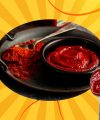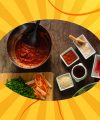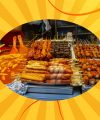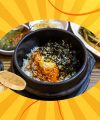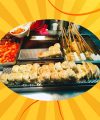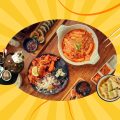Table Of Content
- Why Street Food Festivals Matter In Korea?
- What Are The Best Street Food Festivals In Korea?
- 1. Seoul Bamdokkaebi Night Market
- 2. Tongyeong Hansan Battle Festival
- 3. Jeonju Bibimbap Festival
- 4. Gwangju Kimchi Festival
- 5. Busan Jagalchi Festival
- 6. Suwon Hwaseong Cultural Festival
- Why These Festivals Work (And Attract Global Audiences)?
- What Are Some Practical Tips For First-Time Visitors?
- The Best Street Food Festivals To Visit In Korea Listed!
I LOVE Korean Food. And I know that most of you aren’t even surprised.
It’s an entire experience infused with atmosphere. Also, I love how the food is attached to rich history, and the joy of sharing with others.
I remember watching videos of lively Korean street food festivals and thinking, “This is where culture and cuisine truly come together.”
They are not like a quiet meal at a restaurant. Festivals offer you a vibrant chance to sample a wide array of dishes all in one spot.
Additionally, it also helps you connect with local vendors. Also, you can immerse yourself in the music and performances that highlight food as a central part of everyday life.
If you’re thinking about visiting Korea or just want to get a deeper appreciation of its dynamic culinary scene, knowing which food festivals to check out can really enhance your experience.
Why Street Food Festivals Matter In Korea?
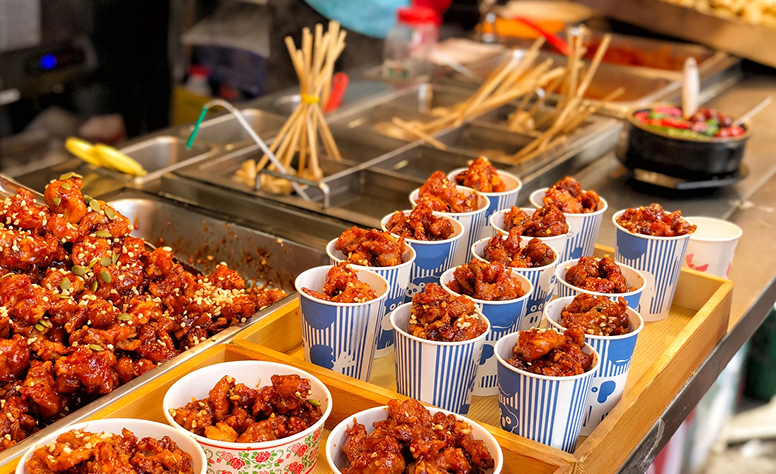
Korean street food festivals are more than weekend markets. They are deeply tied to:
- Local economies
- Cultural traditions
- Regional specialties
For example, the Tongyeong Hansan Battle Festival not only celebrates naval history.
But, according to the Korea Tourism Organization (KTO), it also highlights seafood delicacies from one of Korea’s richest fishing regions, as noted by the
Similarly, Seoul’s Bamdokkaebi Night Market was designed by the Seoul Metropolitan Government.
Its only purpose is to give small businesses and food trucks a platform to grow while showcasing modern takes on traditional dishes.
These events work because they combine authenticity, as in:
- Regional flavors
- Techniques
- Variety
So, they will serve you everything from tteokbokki and hotteok to innovative fusion dishes.
Additionally, these places also believe in community engagement. So, you’ll get to see a lot of:
- Live music
- Performances
- Cultural showcases
According to official tourism sources, they also play a role in boosting domestic tourism.
So, they draw thousands of visitors each year. These people specifically come for the food and atmosphere.
What Are The Best Street Food Festivals In Korea?
If you plan to visit Korea or want to learn more about its vibrant food scene, knowing which food festivals to attend can greatly improve your experience.
1. Seoul Bamdokkaebi Night Market
Running since 2015, the Bamdokkaebi Night Market is one of Seoul’s most popular food events.
Set up in locations like Yeouido Hangang Park and Dongdaemun Design Plaza, it offers food trucks, global street food, and local crafts.
According to the Seoul Metropolitan Government, the market was created to support young entrepreneurs and has become a hotspot for trying modern twists on classics like bulgogi tacos or cheesy tteokbokki.
The riverside setting adds to its charm, with live performances enhancing the festive atmosphere.
2. Tongyeong Hansan Battle Festival
Located in South Gyeongsang Province, this festival commemorates Admiral Yi Sun-sin’s historic naval victory, but food is at its heart.
Tongyeong is renowned for seafood. Oh! You must, must try their particularly fresh oysters and grilled fish.
These two are showcased during the event.
The visitors enjoy reenactments of the famous battle. Additionally, they also indulge in dishes prepared with the day’s catch.
It’s fascinating how you can connect history and gastronomy in a single experience.
3. Jeonju Bibimbap Festival
You can consider Jeonju to be the birthplace of bibimbap, one of Korea’s most famous dishes.
Each October, the Jeonju Bibimbap Festival celebrates the dish with live cooking shows.
Also, you can attend workshops here. You will see food stalls serving authentic bibimbap along with other Jeolla province specialties.
According to Jeonju City’s cultural division, the festival emphasizes hands-on participation.
This allows visitors to prepare their own bibimbap. At the same time, they are learning about the balance of
- Colors
- Nutrition
- Flavors
This is the exact balance that makes the dish culturally significant.
4. Gwangju Kimchi Festival
Held every autumn in Gwangju, this festival is both culinary and cultural.
Visitors can take part in kimjang (the traditional process of making kimchi for winter), sample dozens of kimchi varieties, and learn about fermentation’s role in Korean health traditions.
The Gwangju Tourism Foundation emphasizes that kimchi here is not just food, it’s a way to connect generations.
The festival also hosts international guests, making it one of Korea’s best platforms for global cultural exchange.
5. Busan Jagalchi Festival
Busan’s Jagalchi Market is the country’s largest seafood market, and its annual festival turns the entire area into a culinary playground.
Visitors can try raw fish, grilled eel, and spicy fish stews while enjoying street performances and boat parades.
According to the Busan Metropolitan City’s event page, the local people designed this festival to give locals and tourists access to the freshest seafood at affordable prices.
So, this makes it a perfect entry point for first-time visitors to Busan’s food culture.
6. Suwon Hwaseong Cultural Festival
Though not purely a food festival, Suwon’s event combines historical parades and performances with the city’s most famous dish: Suwon galbi (marinated beef ribs).
Food stalls line the festival route, giving visitors the chance to try the city’s signature barbecue along with other street foods.
Suwon City promotes this as a cultural and culinary highlight that links Korea’s Joseon dynasty heritage with its modern street food scene.
Why These Festivals Work (And Attract Global Audiences)?

What makes these festivals stand out is the blend of local authenticity, innovation, and accessibility.
Korean organizers intentionally design them to be interactive. For instance:
- At the Gwangju Kimchi Festival, you don’t just eat kimchi — you learn to make it through kimjang workshops, which UNESCO recognizes as part of Korea’s intangible cultural heritage.
- When you are in Jeonju, you don’t just order bibimbap — you join cooking classes that explain the symbolic meaning of each ingredient.
- At Seoul’s Bamdokkaebi, you’re not just eating — you’re experiencing the energy of food trucks, live bands, and night markets all at once.
These festivals also adapt to global interest in Korean food. As the K-wave spreads through K-pop and dramas, visitors come to Korea seeking the foods they’ve seen on screen.
Local governments, as noted by the KTO, use festivals to create structured experiences where international tourists can dive into Korean street food culture safely and memorably.
What Are Some Practical Tips For First-Time Visitors?
1. Check dates carefully. Most festivals are seasonal (spring or autumn). So you have to align your travel dates with the official festival calendars published by city governments or KTO.
2. Go early. The street food stalls are most exciting when freshly prepared and less crowded.
3. Bring cash and a reusable bag. I know that while many vendors accept cards, small purchases are smoother with cash.
4. Try regional specialties. I will truly suggest you don’t just eat what you already know (like tteokbokki). For example, Tongyeong’s oyster dishes or Suwon’s galbi are worth the trip.
5. Look for cultural add-ons. You must enjoy performances, parades, or cooking workshops, which add context to the food.
The Best Street Food Festivals To Visit In Korea Listed!
Street food in Korea isn’t just about eating on the go, it’s about connecting with history, tradition, and modern creativity.
Whether you’re biting into bibimbap in Jeonju, stirring kimchi in Gwangju, or enjoying riverside food trucks in Seoul, these festivals show the living heartbeat of Korean food culture.

